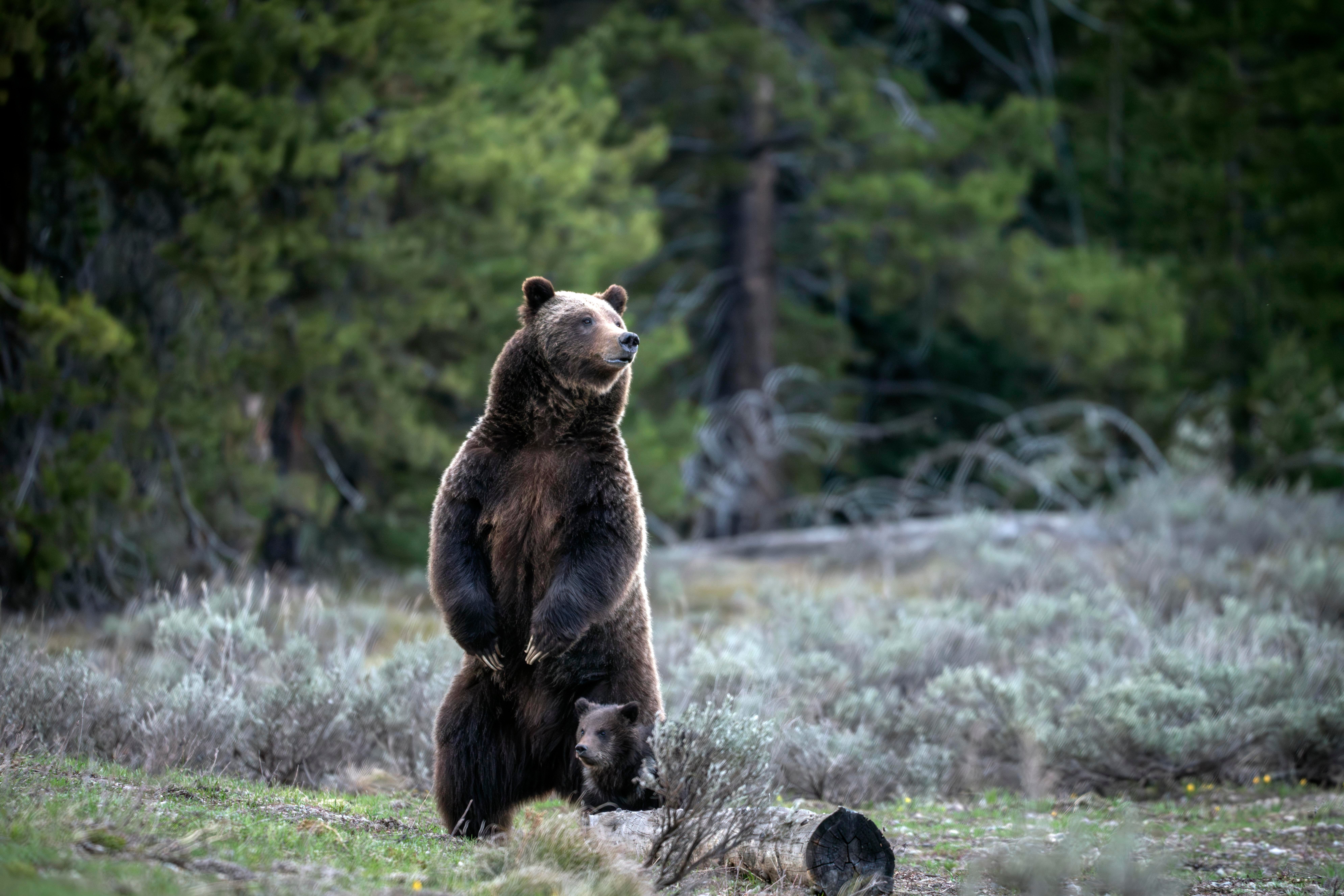A cub of famous Wyoming grizzly No. 399 has been unseen since his mom's death but odds look good
The death of a famous grizzly bear on a highway in western Wyoming has made an orphan of its cub, leading many to wonder about his fate

Your support helps us to tell the story
From reproductive rights to climate change to Big Tech, The Independent is on the ground when the story is developing. Whether it's investigating the financials of Elon Musk's pro-Trump PAC or producing our latest documentary, 'The A Word', which shines a light on the American women fighting for reproductive rights, we know how important it is to parse out the facts from the messaging.
At such a critical moment in US history, we need reporters on the ground. Your donation allows us to keep sending journalists to speak to both sides of the story.
The Independent is trusted by Americans across the entire political spectrum. And unlike many other quality news outlets, we choose not to lock Americans out of our reporting and analysis with paywalls. We believe quality journalism should be available to everyone, paid for by those who can afford it.
Your support makes all the difference.The death of the world’s most famous grizzly bear on a highway in western Wyoming has made an orphan of its cub, but biologists say the youngster’s chances of surviving -- even with a chilly mountain winter coming on -- are good.
"High chances of survival going forward for the yearling, even being on his own,” said Grand Teton National Park bear biologist Justin Schwabedissen.
It should be reassurance to the many worrying.
After grizzly No. 399 died in a vehicle strike Tuesday south of Jackson Hole, her male cub's fate has been a big topic of discussion on a popular Facebook page dedicated to following the bear and her previous cubs. Evidently unhurt by the crash, the cub hasn't been seen since.
Some online commenters say the cub — known informally as “Rowdy” or “Spirit” — should be found and rescued.
Others agree with the usual approach of wildlife managers: Don't interfere with nature. So far, no cub search has been announced.
Had the cub been born last winter, survival would be much less likely.
But this youngster's age of nearly two years, its healthy size and the season — almost time to den up, safe and snug for the winter — are factors working in his favor, according to Schwabedissen.
Perils for grizzlies in the region besides highways include getting shot when the smell of game carcasses draw them into unintentional confrontations with elk hunters. Others are killed when they acquire too much of a taste for apples, dog food, garbage and other human sources of food near homes and become a risk for people.
This 28-year-old momma bear was the oldest known reproducing female grizzly in the Yellowstone ecosystem. Starting in 2004, she birthed 18 cubs in eight litters and had a penchant for hanging out with them near roads in Grand Teton.
Such behavior made her a hit with tourists, sometimes drawing hundreds at a time and causing traffic jams. Dozens of wildlife photographers and scientists — she's named for a numbered tag they put in her ear — watched her as well.
She's not the only famous animal in the region. Last summer, a confirmed sighting of a rare white buffalo calf in Yellowstone stirred widespread excitement.
Just a handful of people saw the bison calf soon after it was born and there have been no sightings since. But according to Native American legend, the calf fulfills an old prophesy and foretells better times ahead.
In 2009, a 725-pound (330-kilogram) Yellowstone bull elk known by his ear tag number drew attention when he died at a ripe old age of at least 15. Famous for getting aggressive with other males — and cars — elk No. 6 suffocated after tripping on a fence and getting pinned between rocks on his back.
Other Yellowstone-area wildlife are known only in death, such as a wolf which a man ran down with a snowmobile and brought into a bar in western Wyoming before killing it last winter.
Grizzly No. 399 and her cub leave a more uplifting legacy: helping people appreciate grizzlies as their numbers in the Yellowstone region continue to rebound from just over 100 in the 1970s to around 1,000 today.
Some of her offspring have had cubs that are now much older than her youngest who's now out there alone, fending for himself.
“She truly was an icon and ambassador for not only for of her species but also the wildness of the Greater Yellowstone Ecosystem,” Grand Teton Superintendent Chip Jenkins said.